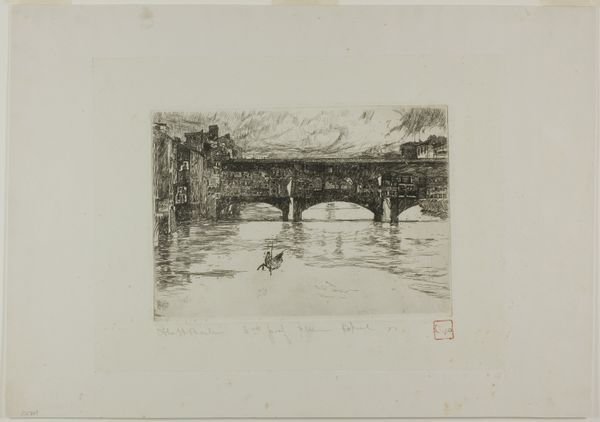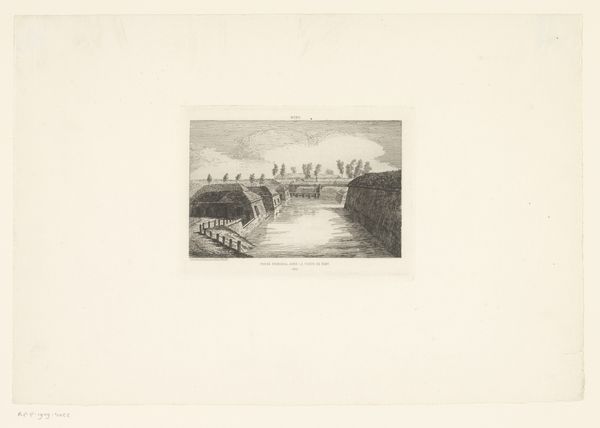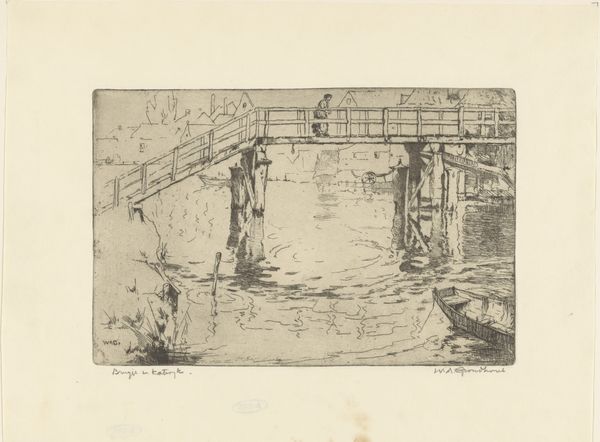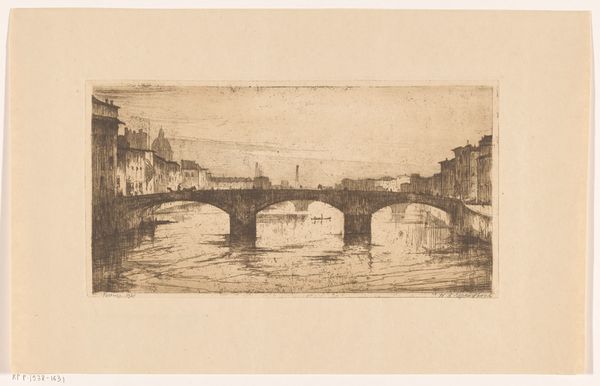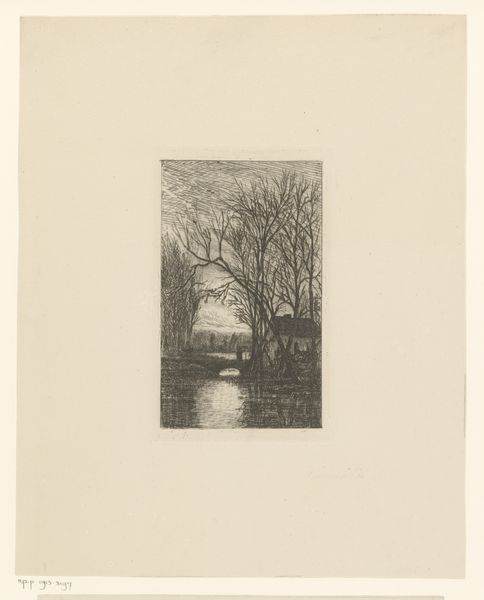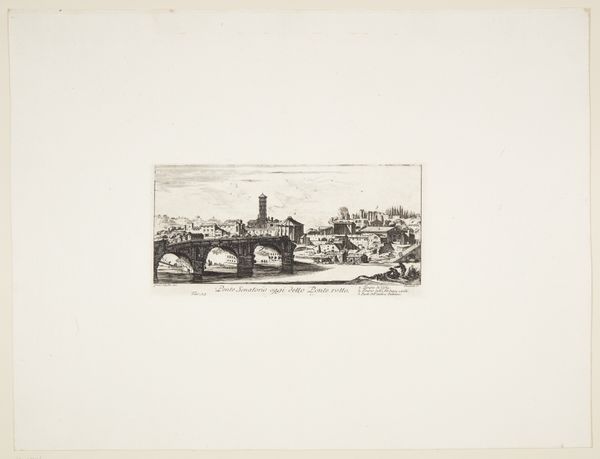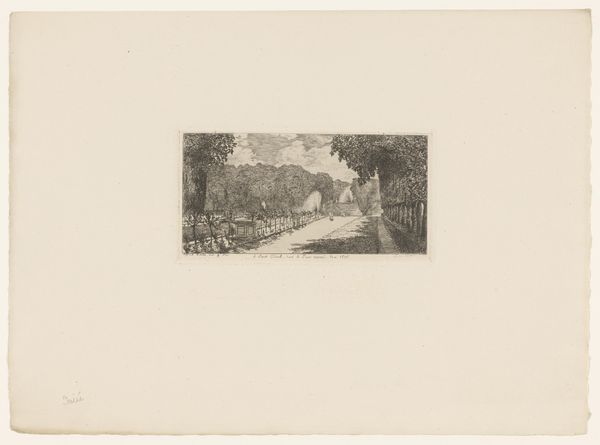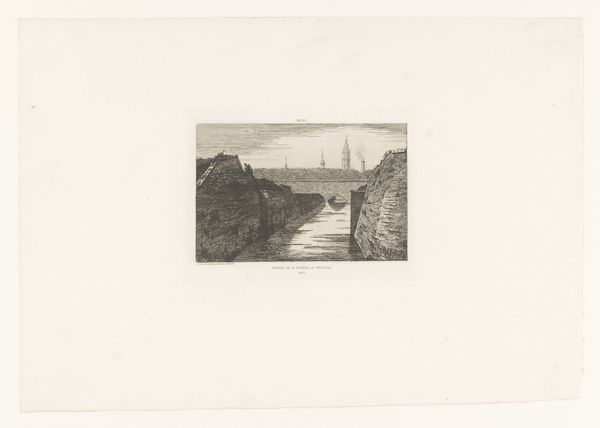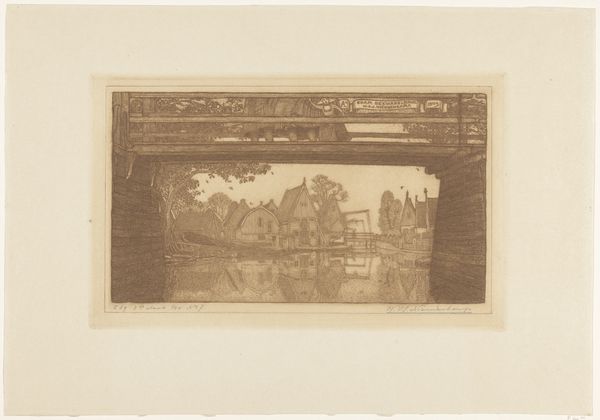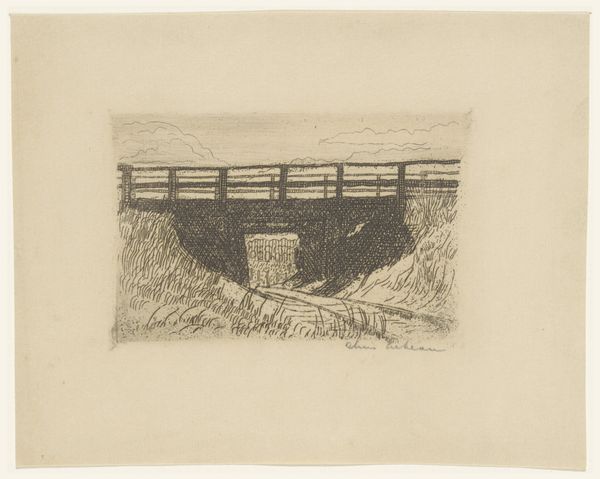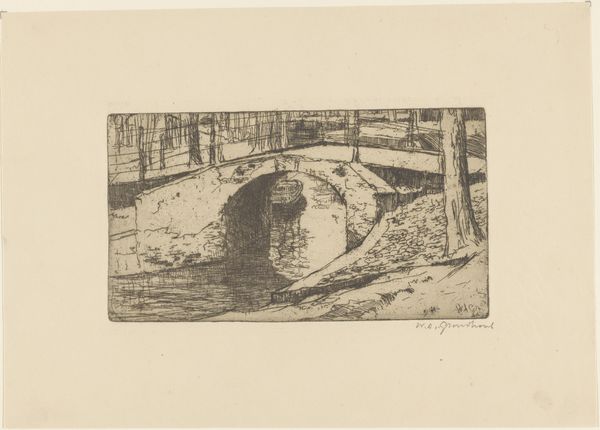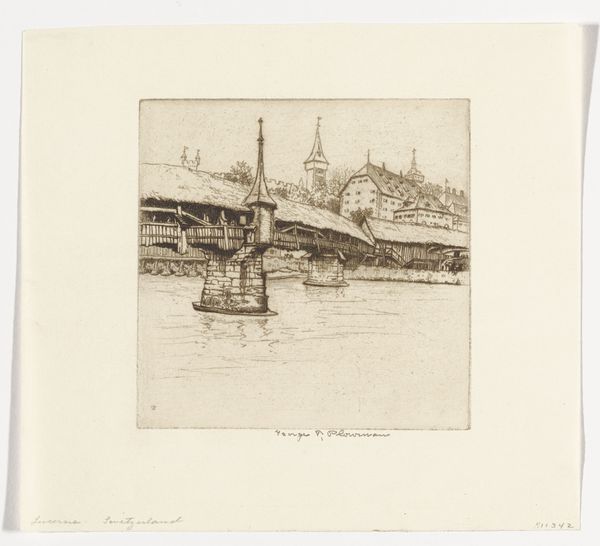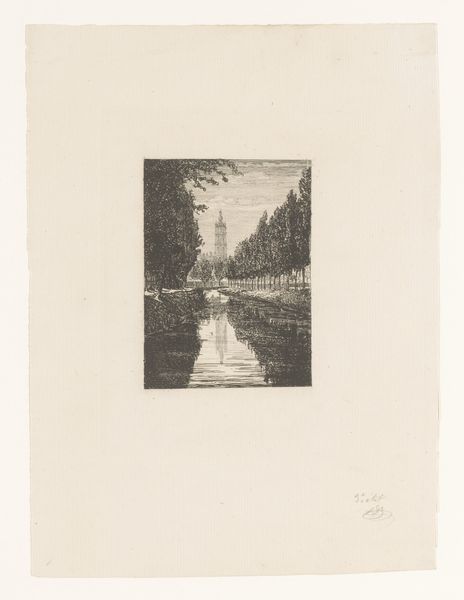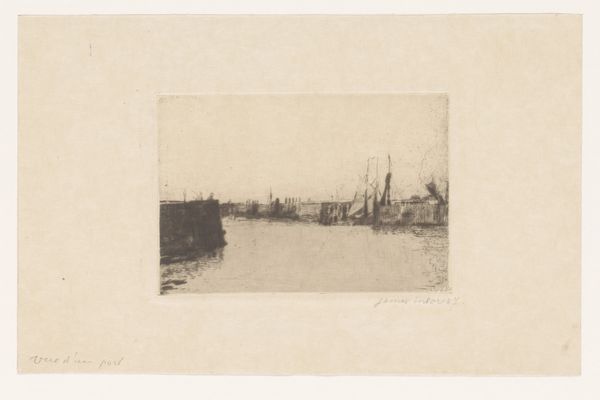
print, etching, graphite
#
ink paper printed
# print
#
etching
#
landscape
#
linocut print
#
graphite
#
cityscape
#
realism
#
monochrome
Dimensions: height 473 mm, width 661 mm
Copyright: Rijks Museum: Open Domain
Editor: So, this is Simon Moulijn’s "View under a bridge in Rotterdam" from 1910. It's a print, mostly ink and graphite on paper. I'm struck by how confined the viewpoint is; it makes the scene feel quite heavy and industrial. How do you interpret this work? Curator: The confinement is key. Consider bridges; they are liminal spaces. Moulijn offers us a perspective *under* the bridge. This creates a psychological space, almost womb-like. What does the bridge connect? Symbolically, perhaps the past and future of Rotterdam itself, with the heavy industry looming in the background. Editor: That's interesting, I hadn’t thought about it in terms of connection. So the bridge itself acts as a kind of symbolic archway? Curator: Precisely! Archways denote transition. Now, observe the monochrome palette. Rotterdam, at this time, was a rapidly industrializing city. By muting the colors, does Moulijn perhaps highlight the grimness, the psychological weight, of that transformation? Editor: The smoke stacks in the distance certainly hint at that! Is there a tradition of bridge imagery that might inform Moulijn's work? Curator: Absolutely. Think of bridges in mythology – Bifrost, for example, connecting Midgard and Asgard. Here, instead of a rainbow bridge to the gods, we have a steel and stone link weighed down by industry. It subtly comments on man's ambition, and its possible cost. Do you notice any other symbolic elements in the etching's composition? Editor: I guess the water, constantly moving, creates a feeling of time flowing? But also reflecting, almost like the city looking at itself? Curator: Very insightful. Reflection is powerful. Moulijn invites us not just to *see* Rotterdam, but to contemplate its evolving identity reflected in the present. Editor: Wow, I’ll definitely look at bridges differently now! Curator: Me too. Looking beneath the surface often reveals more than expected, doesn't it?
Comments
No comments
Be the first to comment and join the conversation on the ultimate creative platform.
